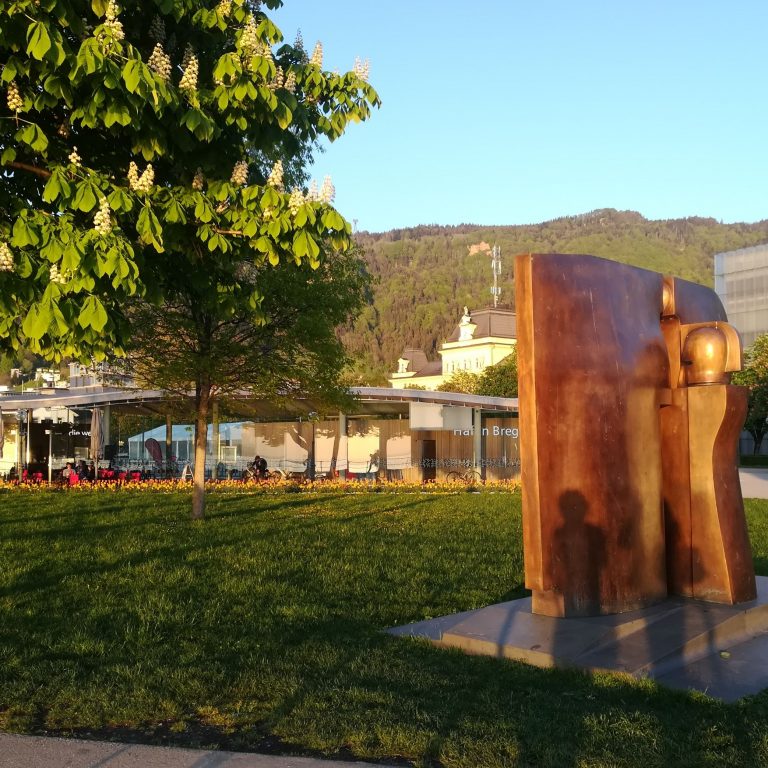
C Homage to Brigantium, Sculpture by Herbert Albrecht, Spring at Lake Constance (c) cs I Vorarlberg Tourismus
Exploring art while out and about
"Art stops" in Vorarlberg - art in public spaces

C Homage to Brigantium, Sculpture by Herbert Albrecht, Spring at Lake Constance (c) cs I Vorarlberg Tourismus
"Art stops" in Vorarlberg - art in public spaces
Art and culture in public spaces
Encounter art and culture everywhere you go: Slow down and take the time to appreciate featured works of art in public spaces
Over the past few years, art in public spaces has changed its ‘standpoint’ considerably. What once may have served as an “equestrian statue” or “statue,” a visible “monument on a massive pedestal,” a figure of power, or a “decorative element” along a promenade, now has a completely different stance.
When it comes to buildings, natural sites, inner-city areas, streets, driveways, parks, etc., artists now are more concerned with opening up squares and spaces and making use of functional connections. This may sometimes concern highly visible, visual anchor points or perhaps discreetly hidden works of art, which invite one to stay and linger such as atmospherically coherent and inviting solutions, i.e. true “art stops.”
Let us welcome you: Become drawn to these special places and allow yourself space to contemplate.
Tip: Featured objects and more are available in the digital map below.
Art in public spaces
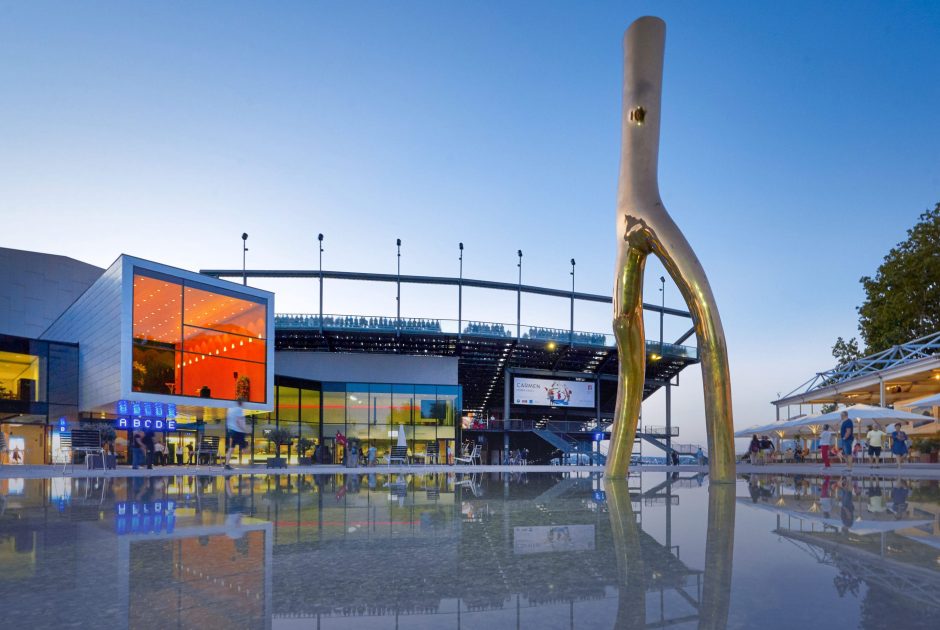
The Bregenz Festspielhaus boasts a 6.90-metre bronze sculpture by Bregenz artist Gottfried Bechtold, which has become a popular meeting place for young and old alike. In summer, little ones can splash around, before events at the lakeside stage its a meeting point for people to gather, and its also a great place to rest after a winter walk. Bechtold’s work features the image of a forking tree trunk, which in its inversion resembles a striding creature. The bronze sculpture is situated in a slight depression that, depending on the amount of precipitation, is transformed into a “small lake of water” up to 15 centimetres deep. According to the artist, the felled tree “rises again as a sculpture and, as if by chance, alludes to an Amazon.”
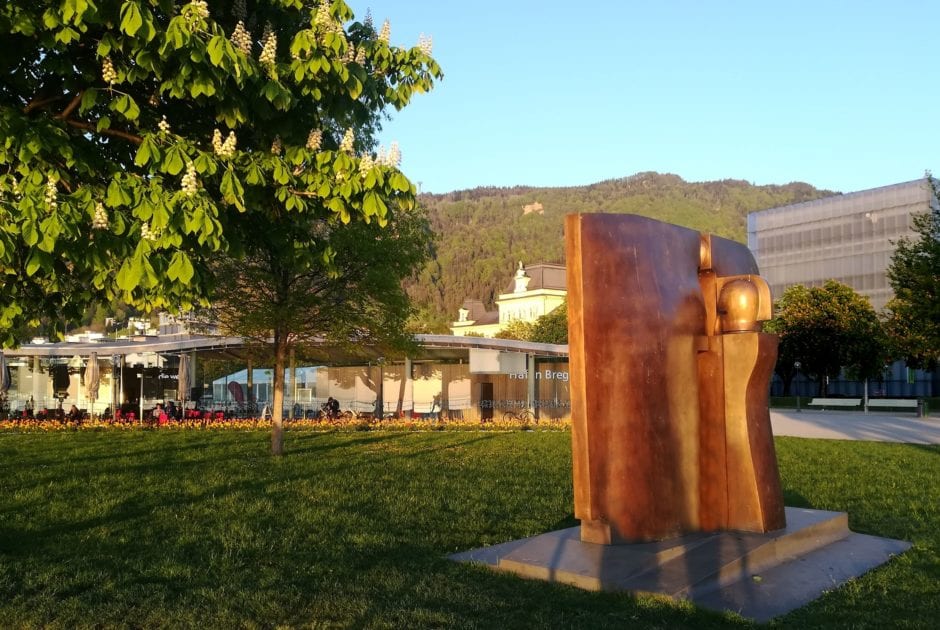
Herbert Albrecht is one of the most important contemporary sculptors in Austria. He has created numerous works for public spaces over the past 50 years. “Hommage an Brigantium” (Homage to Roman Bregenz) was created to mark the occasion of the redesign of the Bregenz harbour in 2011. The bronze casting, which is about three metres high and wide, recalls the Roman period known as “Brigantium”. It consists of three parts. The middle and smallest part resembles a Roman head and peers through the two larger parts towards the port.
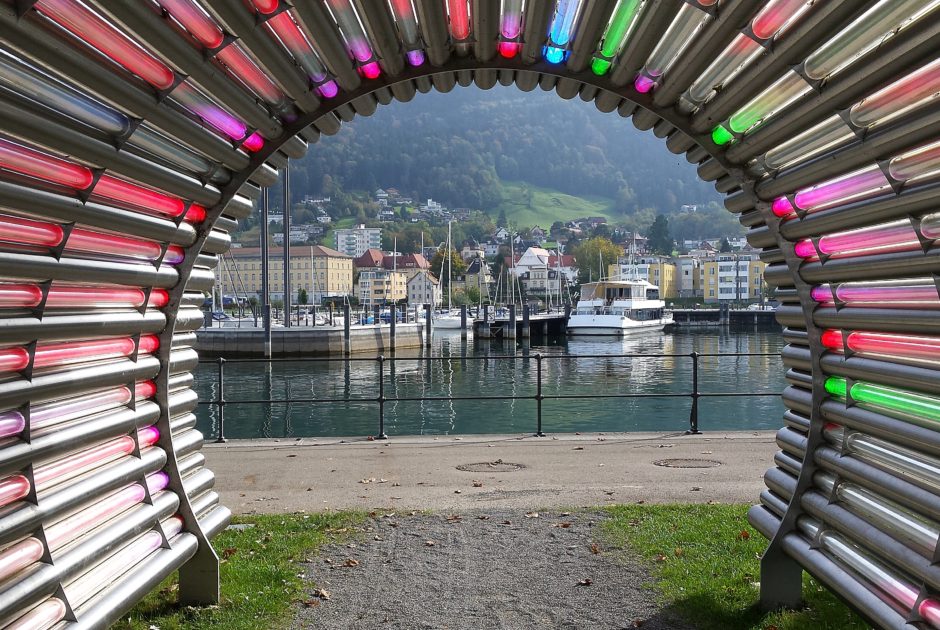
Gerry Ammann’s Light Tunnel is situated at the end of the Westmolo jetty at Bregenz harbour. This tunnel-shaped light exhibition is five metres long and 2.60 metres high. Thirty glass tubes unite to form an “experience space” that, when it’s dark, begins to glow in bright colours. The result is a constantly changing colour space with shifting compositions. The Light Tunnel is of course a popular selfie destination boasting views of Lake Constance in both directions…
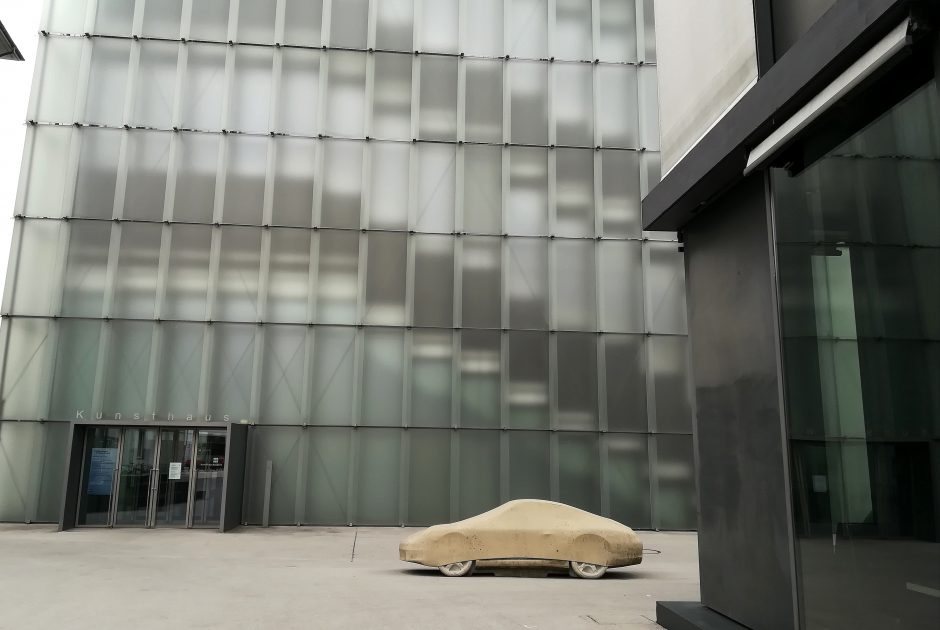
In 1971, the story of the concrete Porsche designed by Gottfried Bechtold, a casting of his own vehicle, began. Some 30 years later, 11 more castings of his Porsche 911 were made for an exhibition in Bregenz. Now, the concrete Porsche is making history in Bregenz once more and is expanding the horizons of its cultural landscape, especially in terms of experimental art. A copy from this series is now located directly in front of the Kunsthaus Bregenz.
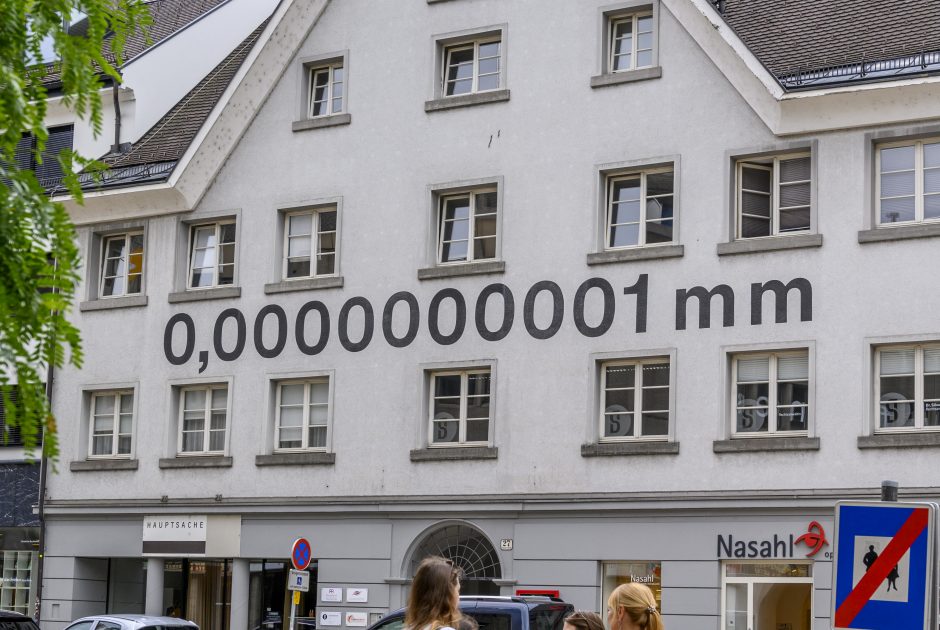
Rathausstrasse 27 in Bregenz: Heinz Gappmayr’s untitled work from 1997 presents viewers with an extremely small dimension. In reality, however, this small measurement is actually difficult to imagine because, according to the artist, his work is intended to visualise “the difference between the idea of something and that which is actually apparent.” In other words, the artist’s writing out of this small number across a 12-m space contrasts with the infinitesimally small unit of measurement. This work of art can be viewed at a highly visible location in the city centre…
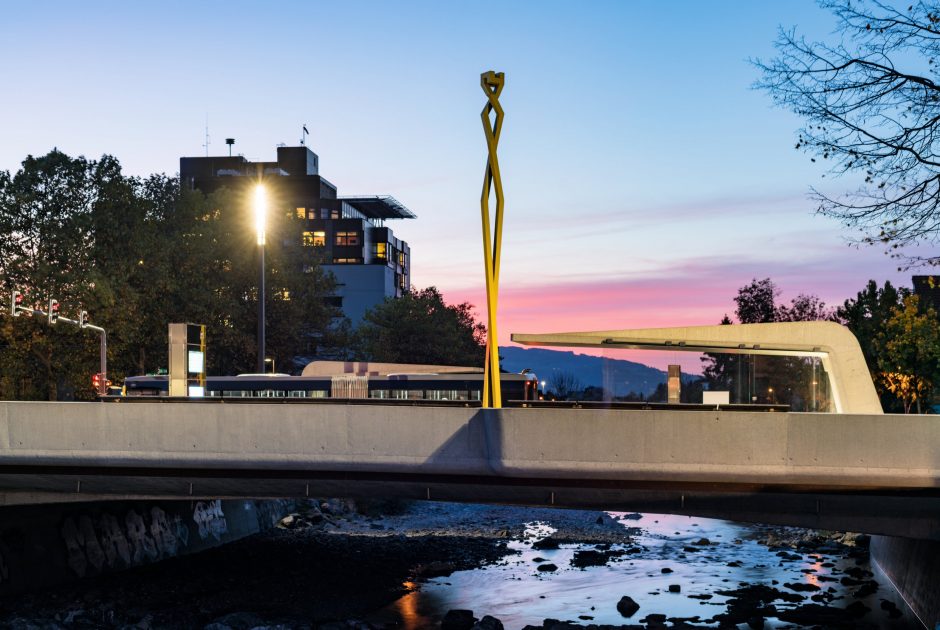
A huge bridge sculpture adorns the new Sägerbrücke bridge in Dornbirn. Entitled “Do.Helix”, it was created by Vorarlberg artist and sculptor Hubert Lampert. Like a kind of double helix, the sculpture rotates upwards twice around its own axis. By using the colours yellow and black, Lampert endeavoured to create both a signal and a shadow effect at the same time. The sculpture is 13 metres high.
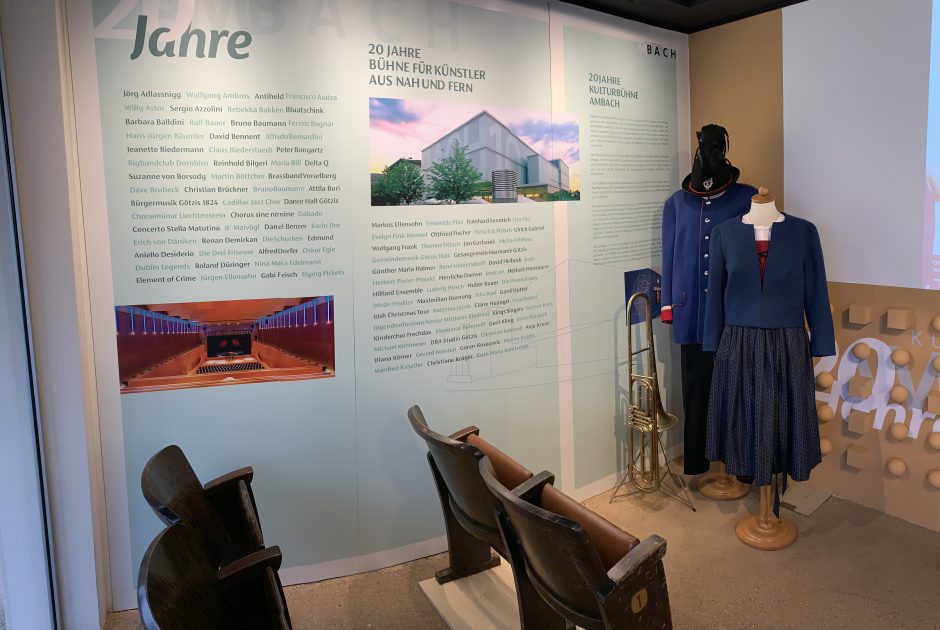
In addition to opportunities for cabaret, the Portierhüsle is also an exhibition venue for current topics in the Götzis cultural scene. Currently, a piece entitled “20 years of Kulturbühne AMBACH” is being featured. This exhibition in four acts features shows interviews of protagonists in addition to a video loop with old posters featuring the nearly 2000 events that have taken place at the Kulturbühne cultural centre thus far. A replica of the binary code by the Götzis artist Hubert Lampert, located in the foyer of the Kulturbühne, serves as a bridge to the multi-use Kulturbühne AMBACH cultural venue. The four acts are dedicated to the themes of music and song, business and enterprise, clubs and associations, theatre and musical theatre. Extensions of this project can be found in public spaces throughout Götzis. In the warmer months, you can go inside though the exhibition is also readily visible from the outside through a large glass façade.
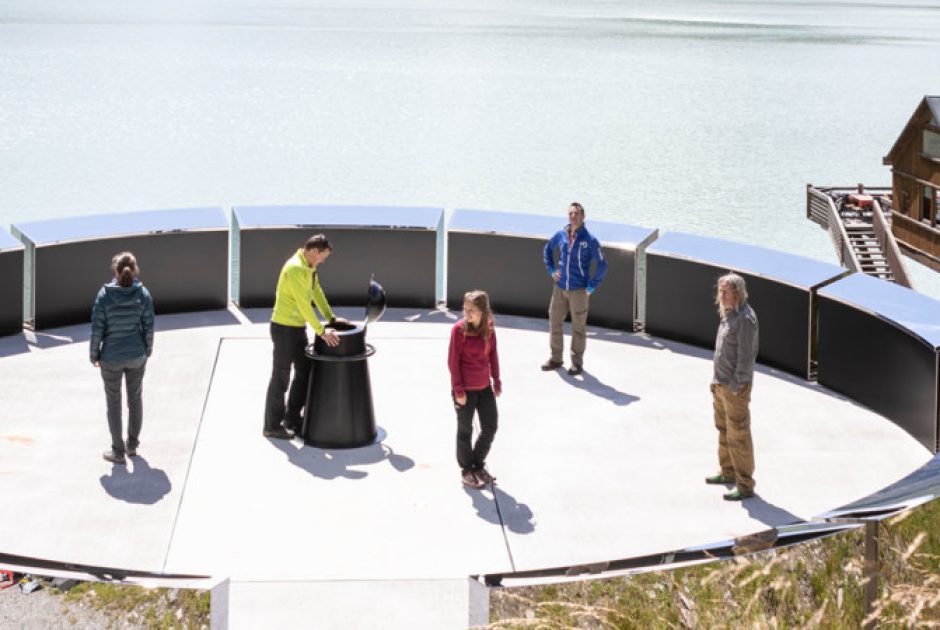
Erdenlicht – A new work of art on the Silvretta Bielerhöhe Pass in Montafon. This work of art was created by artist Miriam Prantl and is located directly on the Illwerke VKW gate shaft in front of the Silvretta-Haus. The platform is surrounded by sculptural segments that act as mirrors, reflecting the sky, water and mountains. The platform and the Erdenlicht artwork can be visited free of charge and are ideal for enjoying a short break on the Bielerhöhe Pass.
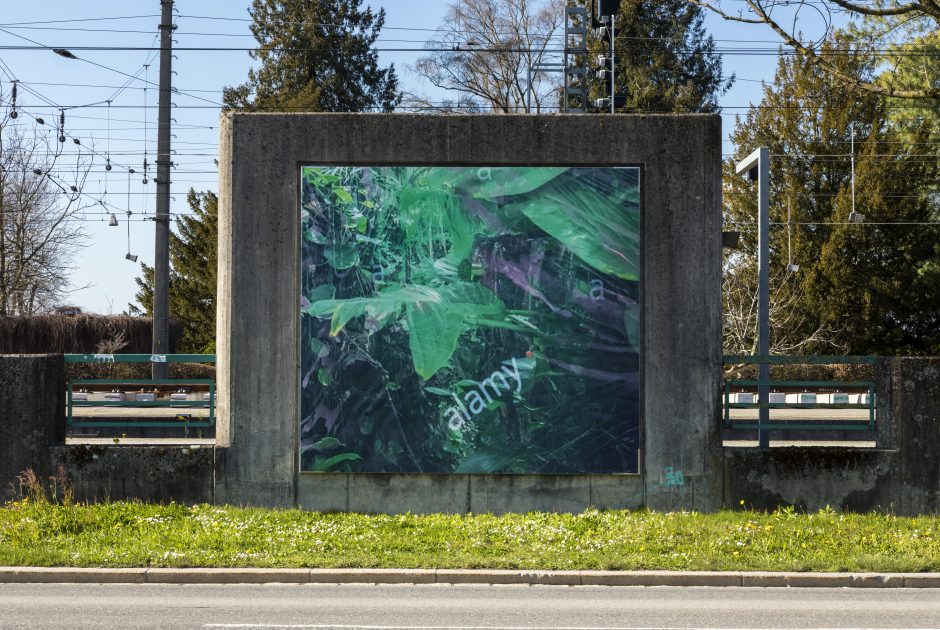
The KUB billboards along Bregenz’s Seestrasse, the city’s busiest street, are an integral part of Kunsthaus Bregenz’s programme. They are an extension of the KUB’s exhibition into public space and provide pedestrians and those in passing cars and trains a taste of the current exhibition.